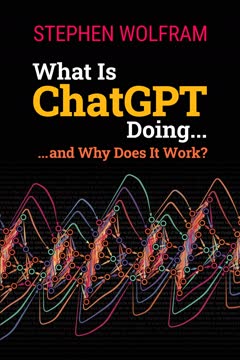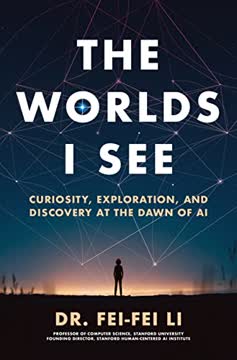重点摘要
1. ChatGPT:重塑沟通和工作的革命性AI工具
ChatGPT是一个巨大的现象,是技术进步加速过程中一个重大的范式转变。
范式转变。 ChatGPT代表了人工智能领域的突破性进展,提供了一个能够理解和生成类人文本的对话界面,涵盖各种主题和语言。由OpenAI开发的这个大型语言模型,自发布以来在几个月内就积累了超过一亿用户。ChatGPT能够进行自然语言对话、回答问题并协助完成任务,正在重塑我们与技术互动和解决问题的方式。
广泛影响。 ChatGPT的影响远不止于简单的文本生成。它正被集成到众多应用和行业中,从软件开发和客户服务到内容创作和数据分析。这种多功能性正在推动企业运营方式和个人工作方式的转变。随着ChatGPT不断发展和改进,它有望成为提升生产力、创造力和决策能力的不可或缺的工具。
2. 掌握提示:解锁ChatGPT全部潜力的关键
ChatGPT的回答质量取决于你的提示。
提示工程。 设计有效提示的艺术和科学对于充分利用ChatGPT至关重要。一个精心构建的提示可以引导AI提供更准确、相关和有用的回答。这项技能涉及如何框架问题、提供背景和指定期望结果的理解。
更好提示的策略:
- 在请求中具体详细
- 提供相关的背景信息
- 使用角色扮演或角色分配来引导AI的视角
- 将复杂任务分解为较小的、可管理的提示
- 通过不同的措辞进行实验以优化结果
掌握提示工程可以显著提高ChatGPT输出的质量和实用性,使其成为各行业专业人士的宝贵技能。
3. ChatGPT的架构:理解背后的技术
ChatGPT使用多层变压器网络生成对用户提示的回答。
变压器架构。 ChatGPT的核心是一个复杂的神经网络架构,称为变压器。这种设计允许模型通过分析大量训练数据中的模式和关系来处理和生成文本。变压器的自注意机制使ChatGPT在生成回答时能够考虑上下文和细微差别,从而产生更连贯和上下文适当的输出。
关键组件:
- 拥有数十亿参数的大型语言模型(LLM)
- 在多样化的互联网文本数据上进行训练
- 通过人类反馈的强化学习(RLHF)进行微调
- 通过用户互动和反馈进行迭代改进
理解ChatGPT的架构有助于用户欣赏其能力和局限性,从而更有效和负责任地使用这项技术。
4. 模型进化:从GPT-3到GPT-4及未来
GPT-4被认为是世界上最大的语言模型。
快速进步。 从GPT-3到GPT-4的进展代表了AI能力的重大飞跃。GPT-4在语言理解、推理和多模态输入处理等各项任务上表现更佳。这一演变展示了AI技术发展的快速步伐,并暗示未来可能出现更强大的模型。
GPT-4的关键改进:
- 多模态能力(文本和图像输入)
- 增强的推理和问题解决能力
- 改进的事实准确性和减少幻觉
- 更好地与人类价值观和意图对齐
- 输出的稳定性和可预测性提高
随着这些模型的不断进化,它们可能会更加深入地融入我们的日常生活和工作流程,提供越来越复杂的帮助。
5. 伦理考量和负责任的AI开发
OpenAI通过不断改进ChatGPT与人类价值观和目标的对齐,付出了重大努力来提高其安全性。
平衡进步与安全。 随着像ChatGPT这样的AI模型变得更强大和广泛应用,必须解决其使用中的伦理问题和潜在风险。负责任的AI开发涉及实施安全措施、促进透明度,并确保AI系统与人类价值观和社会规范对齐。
关键伦理考量:
- 减少偏见并促进AI输出的公平性
- 保护用户隐私和数据安全
- 解决潜在的恶意用途
- 确保AI决策过程的透明度
- 保持人类监督和问责
AI开发者、政策制定者和伦理AI倡导者的持续努力对于创建一个最大化AI益处并最小化潜在危害的框架至关重要。
6. ChatGPT在各行业的整合:变革专业领域
ChatGPT为用户提供了许多商业机会。
行业广泛影响。 ChatGPT的多功能性正导致其在众多专业领域的整合,变革工作方式并创造新的创新和效率机会。
ChatGPT应用示例:
- 软件开发:协助代码生成和调试
- 市场营销:生成内容和分析消费者情绪
- 医疗保健:辅助研究和患者沟通
- 法律:起草文件和进行法律研究
- 教育:创建个性化学习材料和评估
- 金融:分析市场趋势和生成报告
随着ChatGPT在各行业的深入整合,能够有效利用这项技术的专业人士在各自领域可能会具有显著优势。
7. AI时代的教育:适应教学方法和批判性思维
禁止在学校和教育项目中使用ChatGPT是一个严重的错误。
在教育中拥抱AI。 教育者应将ChatGPT视为转变教学方法和增强学习体验的机会,而不是对传统教育的威胁。通过将AI工具如ChatGPT纳入课程,学校可以更好地为学生准备一个AI将成为许多职业不可或缺部分的未来。
适应教育:
- 教授学生如何有效使用和批判性评估AI工具
- 开发专注于AI难以轻易复制的技能(创造力、批判性思维、情商)的课程
- 使用AI提供个性化学习体验和反馈
- 为学生准备一个AI协作普遍存在的工作环境
通过在教育中拥抱AI,我们可以帮助学生发展在日益AI驱动的世界中茁壮成长所需的技能和知识。
8. 搜索的未来:从关键词到知识助手
ChatGPT通过预测提示后面的词来工作。
信息检索的范式转变。 ChatGPT和类似的AI模型正在改变我们访问和处理信息的方式。与依赖关键词返回潜在相关来源列表的传统搜索引擎不同,ChatGPT生成连贯、上下文相关的自然语言查询回答。
与传统搜索的主要区别:
- 自然语言理解和生成
- 查询的上下文解释
- 直接回答而不是来源列表
- 能够进行后续问题和澄清
- 更个性化和直观的信息检索潜力
随着这些AI驱动的知识助手的不断发展,它们可能会从根本上改变我们与信息互动和获取知识的方式。
9. 风险缓解:事实核查和保持人类监督
不要将AI模型的友好对话误认为它实际上是一个朋友。它不是。它不是一个人。它是人们使用的工具,因此它既可能带来帮助也可能带来麻烦。
需要警惕。 虽然ChatGPT和类似的AI模型提供了巨大的好处,但它们也带来了潜在的风险,包括生成不准确或有偏见的信息。用户在使用这些工具时必须保持警惕和批判性视角。
负责任使用的最佳实践:
- 始终从多个可靠来源核查重要信息
- 了解AI生成内容中的潜在偏见
- 将AI作为增强而非替代人类判断和专业知识的工具
- 了解AI模型的局限性和潜在风险
- 倡导AI开发和部署中的透明度和伦理准则
通过保持人类监督和批判性思维,我们可以在利用AI的力量的同时减轻其潜在的缺点。
10. 超越ChatGPT:探索其他生成性AI工具
ChatGPT是一个全球现象,但它并非没有同类。
多样化的AI景观。 虽然ChatGPT引起了广泛关注,但它是生成性AI工具更广泛生态系统的一部分,每个工具都有其自身的优势和应用。探索这些替代方案可以更全面地了解当前AI技术的状态及其潜在应用。
值得注意的生成性AI工具:
- DALL-E和DALL-E 2:从文本描述生成图像
- DeepL Write:AI驱动的写作辅助和翻译
- Notion AI:集成AI用于笔记和项目管理
- Jasper:用于市场营销和商业的AI内容创作
- Poe:用于各种应用的可定制AI聊天机器人
通过熟悉各种可用的AI工具,我们可以更好地利用这些技术来增强我们的工作和日常生活。
最后更新日期:
FAQ
What's "ChatGPT For Dummies" about?
- Introduction to ChatGPT: The book provides a comprehensive introduction to ChatGPT, a generative AI model developed by OpenAI, explaining its capabilities and how it differs from traditional AI and search engines.
- Practical Guide: It serves as a practical guide for beginners, offering step-by-step instructions on setting up and using ChatGPT effectively in various contexts.
- Applications and Implications: The book explores the wide range of applications for ChatGPT, from professional uses in business and education to personal uses in daily life.
- Ethical Considerations: It also addresses the ethical implications and potential risks associated with using AI, emphasizing responsible use and the importance of understanding AI's limitations.
Why should I read "ChatGPT For Dummies"?
- Comprehensive Overview: The book provides a thorough overview of ChatGPT, making it accessible to those new to AI and those looking to deepen their understanding.
- Practical Tips: It offers practical tips and strategies for using ChatGPT effectively, including prompt engineering and integrating AI into various applications.
- Ethical Guidance: Readers gain insights into the ethical considerations and potential risks of AI, helping them use ChatGPT responsibly.
- Future-Proof Skills: By learning about ChatGPT, readers can develop skills that are increasingly relevant in today's technology-driven world.
What are the key takeaways of "ChatGPT For Dummies"?
- Understanding ChatGPT: Readers will understand what ChatGPT is, how it works, and how it differs from other AI models and search engines.
- Prompt Engineering: The book emphasizes the importance of crafting effective prompts to get the best results from ChatGPT.
- Applications Across Fields: It highlights the diverse applications of ChatGPT in fields like education, business, and daily life.
- Ethical Use: The book stresses the importance of using ChatGPT ethically and responsibly, considering potential risks and limitations.
How does "ChatGPT For Dummies" explain prompt engineering?
- Prompt Basics: The book explains that prompts are the inputs given to ChatGPT, which determine the quality of the output.
- Crafting Effective Prompts: It provides strategies for crafting detailed and specific prompts to guide ChatGPT's responses effectively.
- Prompt Engineering as a Skill: The book discusses prompt engineering as a critical skill, essential for leveraging ChatGPT's capabilities fully.
- Examples and Practice: Readers are given examples and encouraged to practice writing prompts to improve their skills.
What are the ethical considerations discussed in "ChatGPT For Dummies"?
- Responsible AI Use: The book emphasizes the importance of using AI responsibly, considering the potential for misuse and harm.
- Privacy Concerns: It discusses privacy issues, warning users about the data they input into ChatGPT and how it might be used.
- Bias and Misinformation: The book addresses the risks of bias and misinformation in AI outputs and the need for critical evaluation of AI-generated content.
- Legal Implications: It touches on legal considerations, such as copyright issues related to AI-generated content.
How does "ChatGPT For Dummies" suggest using ChatGPT in education?
- Personalized Learning: The book suggests using ChatGPT to create personalized learning experiences, adapting content to individual student needs.
- Critical Thinking Development: It encourages using ChatGPT to develop students' critical thinking skills by crafting thoughtful prompts.
- Educator Support: ChatGPT can assist educators by automating tasks like grading and lesson planning, freeing up time for more personalized teaching.
- Avoiding Misuse: The book advises on preventing misuse, such as cheating, by integrating ChatGPT responsibly into educational settings.
What are the professional applications of ChatGPT according to "ChatGPT For Dummies"?
- Business Efficiency: ChatGPT can automate routine tasks, enhance customer service, and assist in data analysis, improving business efficiency.
- Legal and HR Support: It can draft legal documents, summarize complex information, and assist in HR functions like recruitment and onboarding.
- Marketing and Content Creation: The book highlights ChatGPT's role in generating marketing content, conducting sentiment analysis, and personalizing customer interactions.
- Healthcare and Research: ChatGPT can aid in medical research, patient education, and managing electronic medical records.
How does "ChatGPT For Dummies" address the limitations of ChatGPT?
- Hallucinations and Errors: The book warns about ChatGPT's tendency to produce confident but incorrect responses, known as hallucinations.
- Data Limitations: It notes that ChatGPT's knowledge is limited to the data it was trained on, which may not include the most current information.
- Context Sensitivity: ChatGPT's responses can vary based on how prompts are phrased, requiring careful crafting of inputs.
- Ethical and Legal Risks: The book discusses potential ethical and legal risks, such as privacy concerns and intellectual property issues.
What are the future implications of ChatGPT as discussed in "ChatGPT For Dummies"?
- Job Market Impact: The book explores how ChatGPT might change the job market, potentially automating some roles while creating new opportunities.
- AI Integration: It predicts increased integration of AI into everyday applications, transforming how we work and interact with technology.
- Superapps and Connectivity: The book suggests that ChatGPT could lead to the development of superapps, integrating multiple functions into a single platform.
- Societal Changes: It considers broader societal changes, such as shifts in education, media, and public trust, driven by AI advancements.
What are the best quotes from "ChatGPT For Dummies" and what do they mean?
- "ChatGPT is a harbinger of immense and permanent change." This quote highlights the transformative potential of ChatGPT in various aspects of life and work.
- "Someone good at using AI will take jobs away from most people." It underscores the importance of learning to use AI effectively to remain competitive in the job market.
- "AI is not going to take jobs away from most people. Someone good at using AI will." This emphasizes the need for individuals to adapt and learn AI skills to thrive in the future.
- "The hardest part is stretching your own imagination to allow yourself to reach further with each new project." This encourages readers to think creatively and push the boundaries of what they can achieve with AI.
How does "ChatGPT For Dummies" suggest mitigating risks and liabilities associated with AI?
- Fact-Checking Outputs: The book advises always fact-checking AI-generated content to ensure accuracy and reliability.
- Human Oversight: It recommends maintaining human oversight in AI applications, especially in critical areas like healthcare and legal services.
- Transparency and Disclosure: Users should disclose when AI is used in content creation to maintain transparency and trust.
- Compliance and Monitoring: The book suggests ensuring AI use complies with relevant laws and regulations and monitoring audience feedback for potential issues.
What are the different types of AI models discussed in "ChatGPT For Dummies"?
- Generative AI Models: The book explains generative AI models like ChatGPT, which create new content rather than just analyzing existing data.
- Transformer-Based Models: It discusses transformer-based models, which are crucial for understanding context and generating coherent text.
- Multimodal Models: The book introduces multimodal models like GPT-4, which can process both text and images, expanding AI's capabilities.
- Other AI Tools: It also covers other AI tools and models, such as DALL-E for image generation and DeepL for language translation, highlighting their unique features and applications.
评论
《ChatGPT For Dummies》获得了褒贬不一的评价,平均评分为3.39分(满分5分)。读者们赞赏其对ChatGPT和人工智能的全面概述,称其内容清晰易懂,适合初学者。书中涵盖了伦理问题、实际应用和人工智能的未来影响。一些读者认为书籍内容丰富且结构良好,但也有读者觉得在某些方面,特别是提示工程方面,深度不足。批评者指出,由于人工智能技术发展迅速,书中的信息可能很快就会过时。总体而言,这本书被认为是对ChatGPT的新手来说有用的入门读物。
Similar Books














